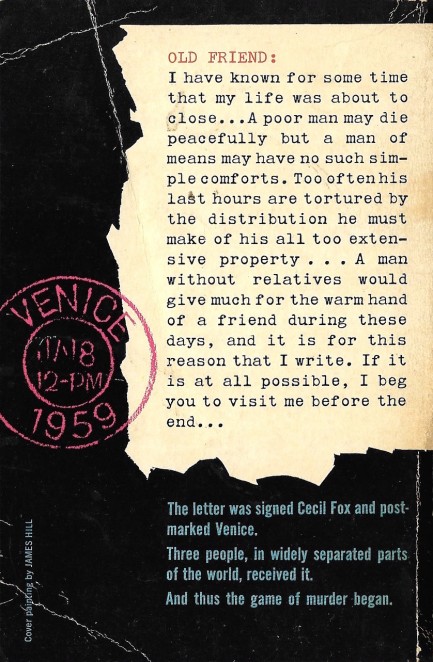 So just out of curiosity, why aren't you paddling an Uber? Seems like everyone else is. 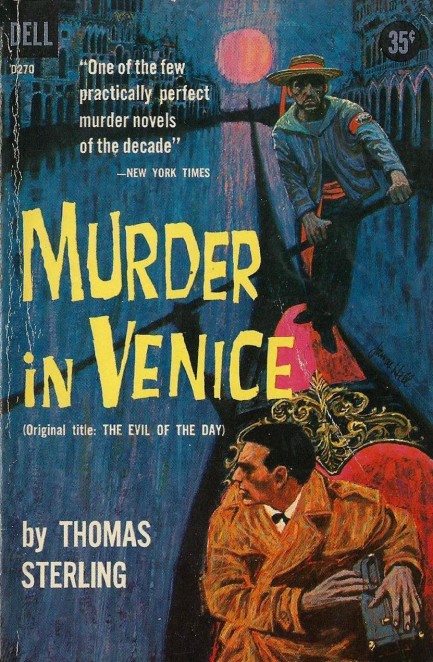
This spectacular cover for Thomas Sterling's Murder in Venice was painted by James Hill, an artist of obvious skill but one we rarely encounter. The book was originally published in 1955 as The Evil of the Day, with this beautiful Dell edition coming in 1959. Sterling tells the tale of a man named Cecil Fox who invites three guests from abroad to his Venetian mansion in order to pretend he's near death and tease them with the promise of inheriting his wealth. These three guests are people he's not had much contact with in recent years, which makes the game even more delicious for him, the way the trio feel plucked from their lives of obscurity to possibly be gifted wealth and status. Factions form and subterfuges abound, but everything is thrown into disarray when one of the guests is murdered. Was it to eliminate a possible inheritor? To add intrigue to the game? Or for other, unguessable reasons?
Go with option three. The whole point of murder mysteries is to be unguessable. Murder in Venice is a pretty good puzzler, with a small set of curious characters and a few forays into the Venetian night. Sterling gets inside the head of his protagonist Celia Johns quite effectively. She's the personal assistant to one of the invitees, and thus has no skin in the game. She just wants a fair wage for a fair day's work. At least that what she says. Her host Mr. Fox, on the other hand, seems to think everyone is corruptible, and everyone is money hungry—it's just a matter of baiting the hook in the right way. He thinks he knows most people better than they know themselves, and he doesn't see Celia as any sort of exception.
While Murder in Venice is a mystery, it's also a minor sociological examination of what it means to some people to be rich but face losing their money, and what it means to others to not value money at all. Sterling scored a success, but interestingly, he borrowed the idea from Ben Johnson's play Volpone, which premiered way back in 1606. Sterling was up front about his inspiration, and within his novel the play even makes an appearance on a drawing room shelf. Frederick Knott, who wrote the famed plays Wait Until Dark and Dial M for Murder, later adapted Sterling's novel into a 1959 play called Mr. Fox of Venice. The next year the book was published in France as Le Tricheur de Venise and won Sterling the Grand Prix de Littérature Policière for foreign authors. And finally, Joseph Mankiewicz combined the original play, Sterling's novel, and Knott's play into a 1967 movie called The Honey Pot.
When material gets recycled to that extent, it's usually good, and Sterling does his part. He was a diplomat before becoming an author and lived in Italy for years, so we would have liked more color from someone who obviously knew Venice well, but he's an interesting writer even without the aid of scenery, as in this moment of musing from Celia: She said, “my sleep,” as though it were, “my dress,” or, “my ring.” It belonged to her. Every night had a certain amount, and if she lost it she was frantic. She had forgotten that sleep was not a thing, it was a country. You couldn't get it, you had to go there. And it was never lost. Sometimes you missed a train, but there was always another coming after. In the meantime, neither the green hills nor the nightmare forests ever changed. They stayed where they were and you went to them. And sooner or later you would go and not come back.
 Hepburn has to overcome blindness, bad guys, and the script. 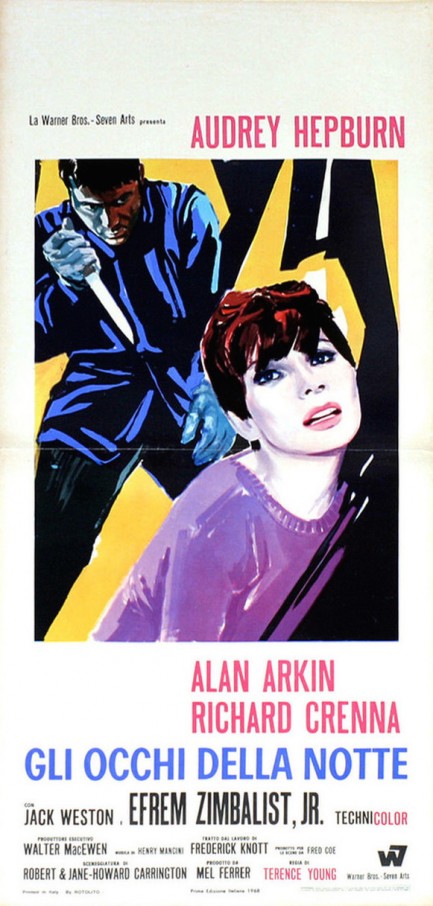 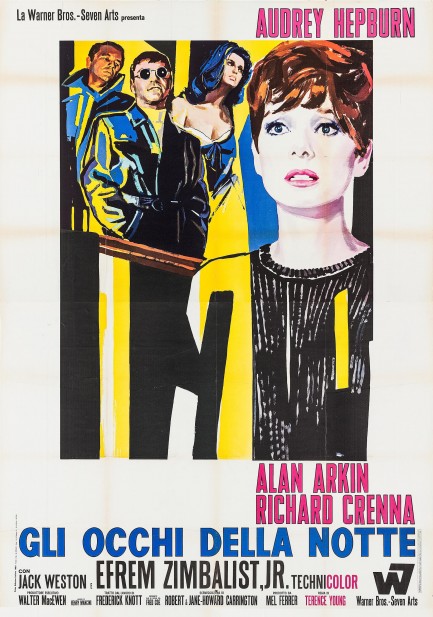 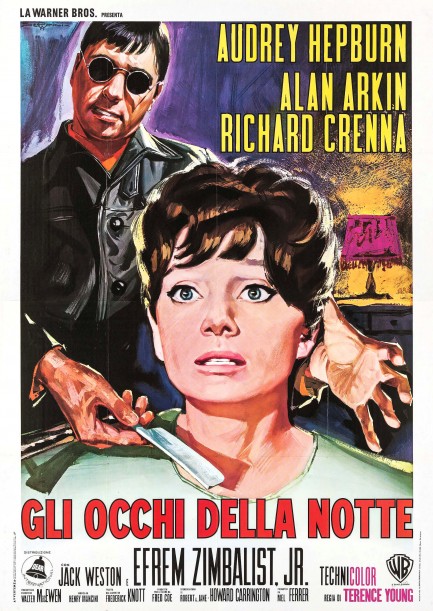
Above are three beautiful posters for the suspense film Gli occhi della notte, which is better known as the Audrey Hepburn classic Wait Until Dark. You've doubtless heard of it. Hepburn plays a blind woman terrorized by a sociopath. The film also starred Richard Crenna and Alan Arkin, and was directed by Terence Young, who had previously helmed the James Bond movies Dr. No, From Russia with Love, and Thunderball, so there's plenty of star power here, in front of and behind the camera.
And as often happens when a movie supposedly can't miss, this one goes wide of the mark. The main problem is recurring plot unbelievability, perhaps best exemplified by the fact that Hepburn, who lives in a building where there are other apartments, and has an ally who lives in one of those flats, doesn't simply hole up at the neighbor's when the crazy man targets her. She can get there without being seen, but she doesn't take the easy escape available to her.
In real life people don't always see the best solution to a problem, but in a movie, if the filmmakers want the audience to be fully invested, the heroine or hero should make smart choices, which ratchets up the fear when those choices still fail. We wrote an essay touching on that theme a while back. Hepburn's lack of survival instinct is a pretty big issue, but okay, she's great in the film, of course, and if you really immerse yourself it will still scare you once or twice. Just don't let anyone tell you it's perfect. After opening in the U.S. in 1967 Wait Until Dark premiered in Italy today in 1968. 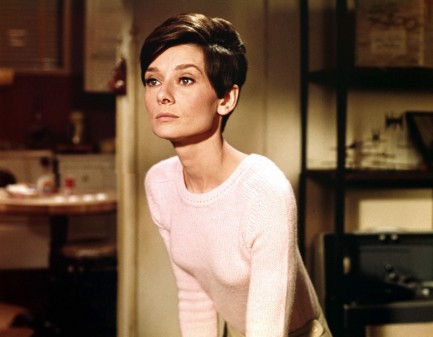 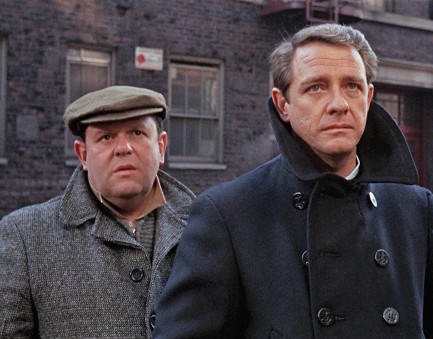 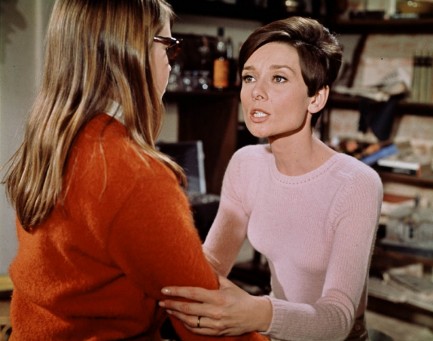 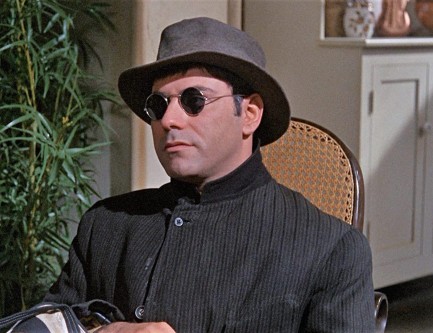 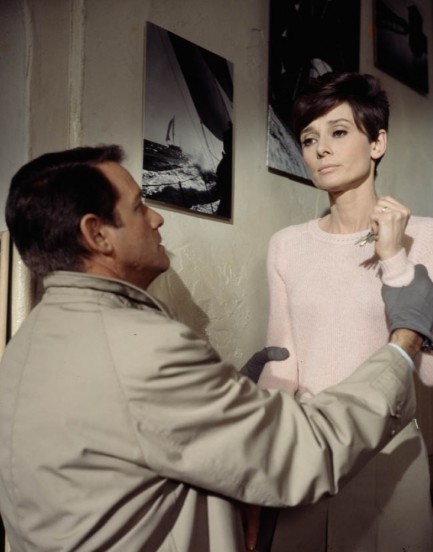 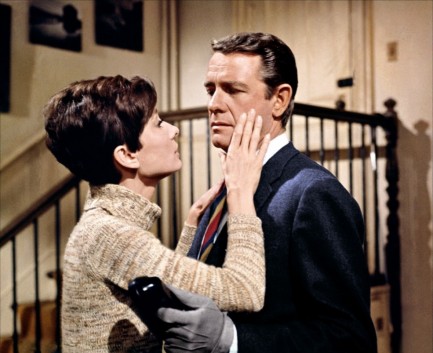 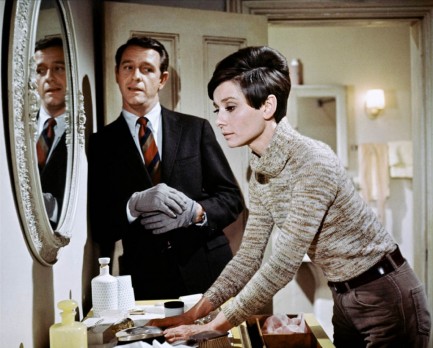 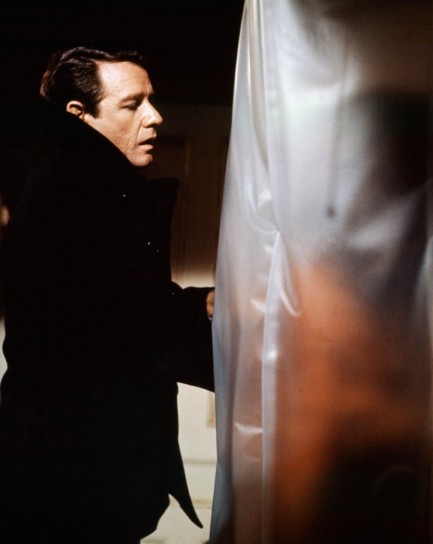
 Demongeot explains to Cinémonde how she aspires to inspire. 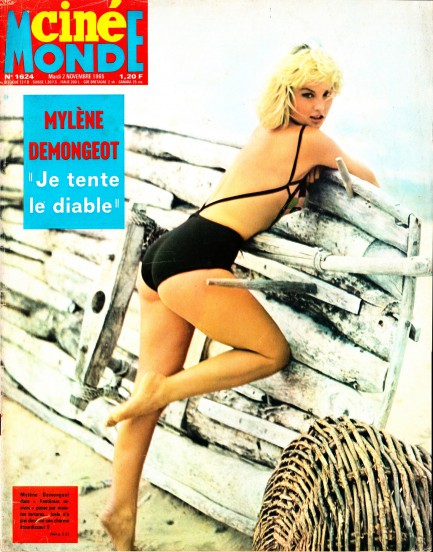
The French weekly Cinémonde debuted in October 1928, with the above issue hitting newsstands today in 1965 starring French goddess Mylène Demongeot on the cover. Inside, her feature is headed with the text “Il faut oser tenter le diable,” which means, “We must dare tempt fate,” and she goes on to say, “Il existe peut-être dix photographes au monde (seulement) à qui, pour nue... ou presque, une actrice puisse faire confiance,” or basically, “There are perhaps ten photographers in the world (only) who… (almost) naked, an actress can trust.” The literal translation reads a bit backward, but you get the drift—she of course means only a few photographers can be trusted to shoot an actress (almost) nude. One of those is apparently British director Terence Young, who helmed Dr. No and two other Bond movies, as well as Zarak and Wait Until Dark, and whose photography you see here. However Demongeot, after all this philosophizing about the (almost) nude form, does not appear (almost) naked in any of the photos. Still, she looks amazing, as always. She says at the end, “Je voudrais qu'il ait envie de les decouper et de les regarder longuement, avant de se coucher. Pour qu’il fasse de beaux rêves.” Something along the lines of wanting men to cut out her photos and look at them before going to bed… to inspire beautiful dreams. Well, we would have to use a laptop instead of cut out photos, and we’d do it, except we have a feeling our girlfriends would not let us get away with it. Of that we’re (almost) sure.
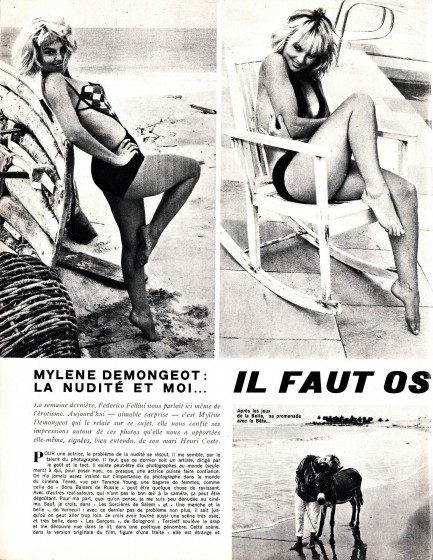 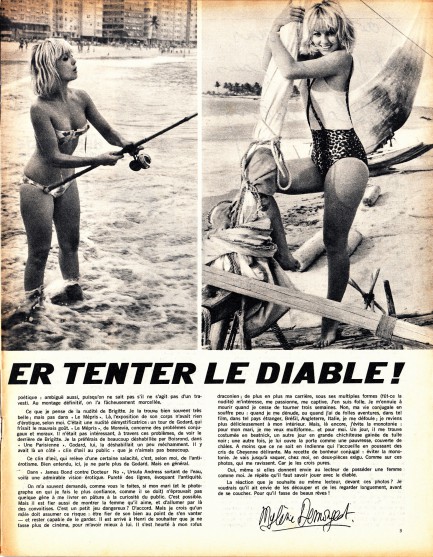 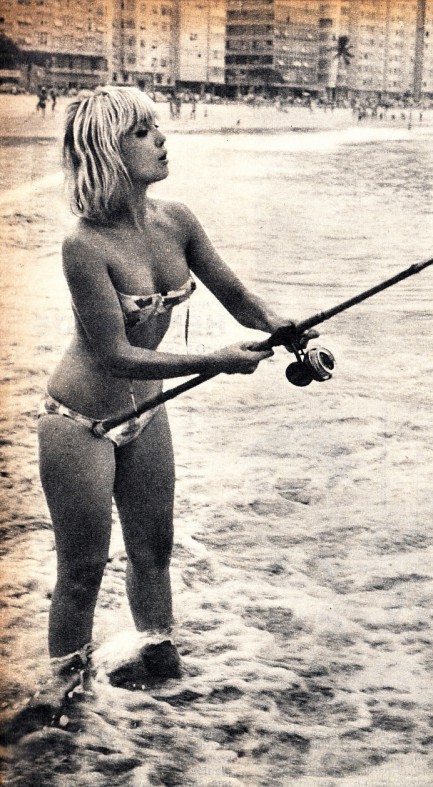
|
 |

The headlines that mattered yesteryear.
2003—Hope Dies
Film legend Bob Hope dies of pneumonia two months after celebrating his 100th birthday. 1945—Churchill Given the Sack
In spite of admiring Winston Churchill as a great wartime leader, Britons elect
Clement Attlee the nation's new prime minister in a sweeping victory for the Labour Party over the Conservatives. 1952—Evita Peron Dies
Eva Duarte de Peron, aka Evita, wife of the president of the Argentine Republic, dies from cancer at age 33. Evita had brought the working classes into a position of political power never witnessed before, but was hated by the nation's powerful military class. She is lain to rest in Milan, Italy in a secret grave under a nun's name, but is eventually returned to Argentina for reburial beside her husband in 1974. 1943—Mussolini Calls It Quits
Italian dictator Benito Mussolini steps down as head of the armed forces and the government. It soon becomes clear that Il Duce did not relinquish power voluntarily, but was forced to resign after former Fascist colleagues turned against him. He is later installed by Germany as leader of the Italian Social Republic in the north of the country, but is killed by partisans in 1945.
|

|
|

It's easy. We have an uploader that makes it a snap. Use it to submit your art, text, header, and subhead. Your post can be funny, serious, or anything in between, as long as it's vintage pulp. You'll get a byline and experience the fleeting pride of free authorship. We'll edit your post for typos, but the rest is up to you. Click here to give us your best shot.

|
|


